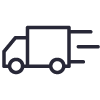Learning-from-Observation 2.0
Automatic Acquisition of Robot Behavior from Human Demonstration
Springer Nature Switzerland
ISBN 978-3-032-03445-8
Standardpreis
Bibliografische Daten
eBook. PDF. Weiches DRM (Wasserzeichen)
2025
XVI, 204 p. 106 illus., 60 illus. in color..
In englischer Sprache
Umfang: 204 S.
Verlag: Springer Nature Switzerland
ISBN: 978-3-032-03445-8
Weiterführende bibliografische Daten
Das Werk ist Teil der Reihe: Synthesis Lectures on Computer Vision
Produktbeschreibung
This book presents recent breakthroughs in the field of Learning-from-Observation (LfO) resulting from advancement in large language models (LLM) and reinforcement learning (RL) and positions it in the context of historical developments in the area. LfO involves observing human behaviors and generating robot actions that mimic these behaviors. While LfO may appear similar, on the surface, to Imitation Learning (IL) in the machine learning community and Programing-by-Demonstration (PbD) in the robotics community, a significant difference lies in the fact that these methods directly imitate human hand movements, whereas LfO encodes human behaviors into the abstract representations and then maps these representations onto the currently available hardware (individual body) of the robot, thus indirectly mimicking them. This indirect imitation allows for absorbing changes in the surrounding environment and differences in robot hardware. Additionally, by passing through this abstract representation, filtering can occur, distinguishing between important and less important aspects of human behavior, enabling imitation with fewer demonstrations and less demanding demonstrations. The authors have been researching the LfO paradigm for the past decade or so. Previously, the focus was primarily on designing necessary and sufficient task representations to define specific task domains such as assembly of machine parts, knot-tying, and human dance movements. Recent advancements in Generative Pre-trained Transformers (GPT) and RL have led to groundbreaking developments in methods to obtain and map these abstract representations. By utilizing GPT, the authors can automatically generate abstract representations from videos, and by employing RL-trained agent libraries, implementing robot actions becomes more feasible.
Autorinnen und Autoren
Produktsicherheit
Hersteller
Springer-Verlag GmbH
Tiergartenstr. 17
69121 Heidelberg, DE
ProductSafety@springernature.com

 BÜCHER VERSANDKOSTENFREI INNERHALB DEUTSCHLANDS
BÜCHER VERSANDKOSTENFREI INNERHALB DEUTSCHLANDS











